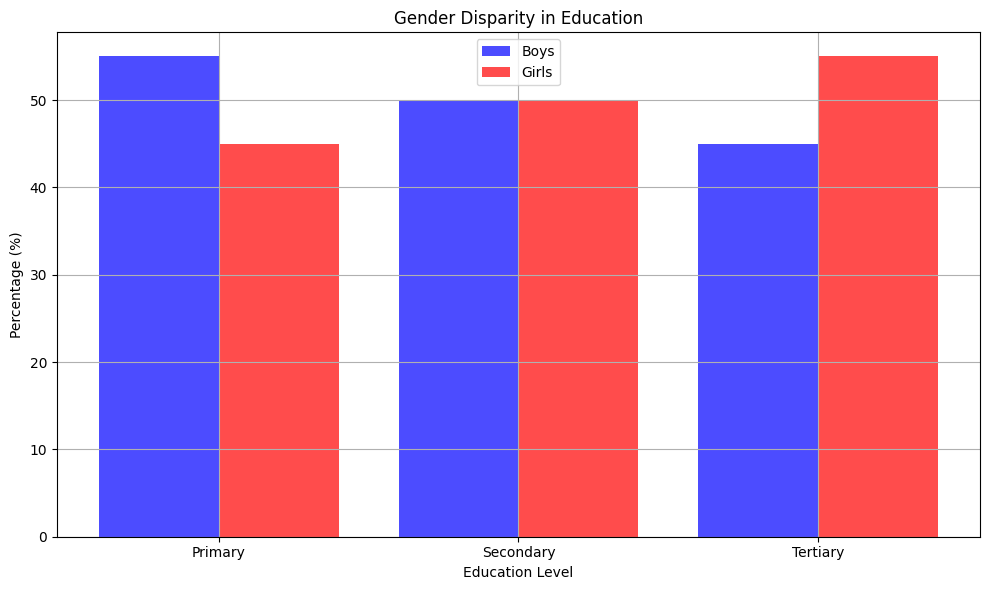Gender disparity in education remains a significant global issue, influencing access to learning opportunities and societal development. In Bangladesh, understanding the enrollment patterns of boys and girls across different education levels provides valuable insights into educational equity and challenges.
Visualizing Gender Enrollment Disparity
To grasp the gender enrollment disparities in Bangladesh, we examine a bar chart illustrating the percentage of boys and girls enrolled in schools at various education levels—primary, secondary, and tertiary.

Bar Chart Analysis
The following bar chart presents the enrollment percentages of boys and girls in Bangladesh:
- Primary Education: Boys – 55%, Girls – 45%
- Secondary Education: Boys – 50%, Girls – 50%
- Tertiary Education: Boys – 45%, Girls – 55%
Insights from the Data
From the chart, several insights emerge:
- Primary Education: Boys have a higher enrollment percentage compared to girls, indicating potential disparities in access to early education opportunities.
- Secondary Education: Enrollment is balanced between boys and girls, suggesting improved access to and parity in secondary education enrollment.
- Tertiary Education: Girls show higher enrollment percentages than boys, reflecting positive strides towards gender parity in higher education.
Implications and Considerations
The disparities observed highlight both progress and challenges in achieving gender equality in education:
- Access and Equity: Efforts to ensure equal access to education for both genders are crucial, particularly at primary levels where disparities are more pronounced.
- Societal Impact: Closing gender gaps in education not only enhances individual opportunities but also contributes to economic growth, social development, and gender equality goals.
Moving Forward
As Bangladesh continues its efforts towards inclusive and equitable education, understanding and addressing gender disparities remain pivotal. Policymakers, educators, and communities must collaborate to implement strategies that promote equal access and support educational outcomes for all children, regardless of gender.
Conclusion
The bar chart visualizing gender disparity in education provides a snapshot of enrollment patterns among boys and girls in Bangladesh across different education levels. By analyzing these trends, stakeholders can advocate for policies and initiatives that foster inclusive and equitable educational environments, paving the way for a brighter and more equal future for all.
As we strive towards achieving Sustainable Development Goal 4—Quality Education—we must prioritize efforts to eliminate gender disparities in education and ensure every child, regardless of gender, has the opportunity to fulfill their educational potential.